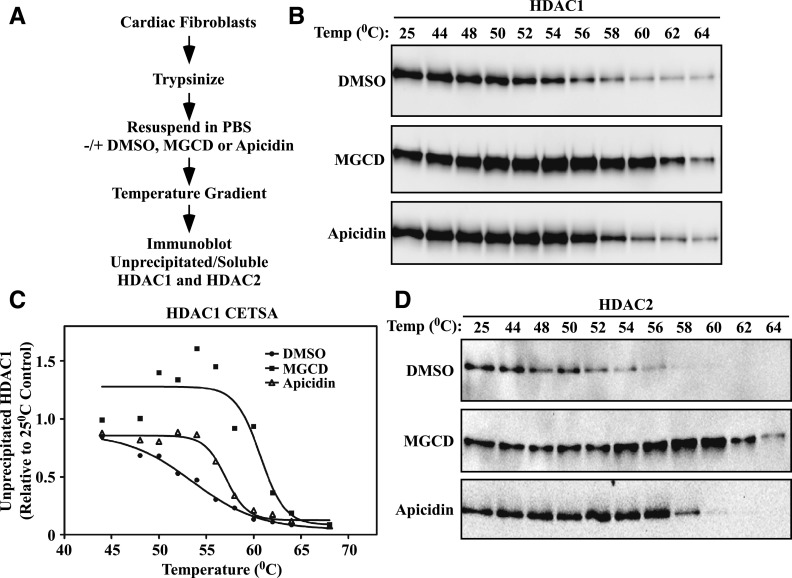Fig. 8.
CETSA suggests differential engagement of HDAC1/2 complexes by MGCD and apicidin. (A) Schematic design of the CETSA protocol. (B) Trypsinized NRVFs were mixed with DMSO vehicle, MGCD0103 (1 μM), or apicidin (3 μM) for 3 hours prior to exposing the mixture to a heat gradient. Soluble, unprecipitated protein was subjected to immunoblotting with an anti-HDAC1 antibody. (C) HDAC1 signal intensity in (B) was quantified by densitometry and plotted relative to the 25°C control. Melting temperatures were calculated using the Boltzman sigmoidal equation for nonlinear fit in GraphPad Prism (DMSO, 53.5°C; MGCD0103, 60.7°C; and apicidin, 57.0°C). (D) The samples shown in (B) were subjected to immunoblotting with an HDAC2-specific antibody. MGCD, MGCD0103.

